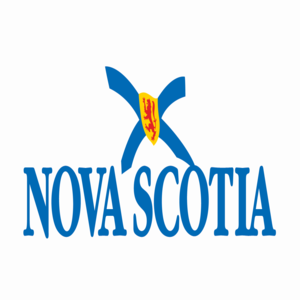aquaculture
Type of resources
Topics
Keywords
Contact for the resource
Provided by
Formats
Representation types
Update frequencies
status
-

The Nova Scotia Department of Fisheries and Aquaculture is the lead regulatory of aquaculture leasing and licensing. This file illustrates all the issued landbased licenses within Nova Scotia. Fisheries and Aquaculture also provides a mapping tool for this data at: http://novascotia.ca/fish/aquaculture/site-mapping-tool/
-

The Nova Scotia Department of Fisheries and Aquaculture is the lead regulatory of rockweed leasing and licensing. This file illustrates all the issued rockweed leases along the coast of Nova Scotia. Fisheries and Aquaculture also provides a mapping tool for this data at: http://novascotia.ca/fish/aquaculture/site-mapping-tool/
-

Information regarding processor facilities in British Columbia including location, company name and license tag information. CRIMS is a legacy dataset of BC coastal resource data that was acquired in a systematic and synoptic manner from 1979 and was intermittently updated throughout the years. Resource information was collected in nine study areas using a peer-reviewed provincial Resource Information Standards Committee consisting of DFO Fishery Officers, First Nations, and other subject matter experts. There are currently no plans to update this legacy data.
-

The boundaries of a unit of a Shellfish Aquaculture Plan within a Coastal Plan
-

PURPOSE: The objective of the sea scallop survey is to obtain fishery independent data on the abundance, size distribution and location of scallops in the southern Gulf of St. Lawrence and to provide science advice on stock status to fishery managers, decision makers and industry stakeholders. DESCRIPTION: The sea scallop research survey is conducted on CCGS MPerley (or chartered vessels) and has stratified random sampling. For each tow (or sample), data is recorded on tow, all specimens caught, geolocation, shell height frequency and biological samples. This monitoring program is currently on-hold. It will resume if a survey is deemed necessary to provide a new or updated science advice in the future. Stock status is currently (2024) in the critical zone. Rebuilding plan to follow. PARAMETERS COLLECTED: Catch number (biological), catch weight (biological), individual lengths (biological), age (biological), meat weight (biological). PHYSICAL SAMPLE DETAILS: A sub-sample of scallop shells is retained and analysed for age determination in the lab. SAMPLING METHODS: From 2012 to 2016, an annual, rotational, multispecies research survey program for scallop in the sGSL was conducted to obtain fishery independent indices of abundance, biomass estimates, and biological characteristics information (shell height, meat weight, sex, clappers). One section of a SFA or the SFA in its entirety was surveyed per year, with the exception of SFA 23 which was excluded because of the low scallop fishing effort reported from this area in recent years. From 2019 to 2023, annual surveys were conducted on the three major beds in the Northumberland Strait (West Point and Cape Tormentine in SFA 22, Pictou in SFA 24), using a similar methodology as the previous surveys. Methodology can be found in the Science Advisory Report and the Research Document listed in the citations list. USE LIMITATION: To ensure scientific integrity and appropriate use of the data, we would encourage you to contact the data custodian.
-

File contains all issued marine aquaculture leases along the coast of Nova Scotia. Fisheries and Aquaculture also provides a mapping tool for this data at: http://novascotia.ca/fish/aquaculture/site-mapping-tool/
-

This dataset is complementary to the Centre for Marine Applied Research’s (CMAR) Current Data and Wave Data County datasets. The Current and Wave data are measured by Acoustic Doppler Current Profiler (ADCPs), which are typically deployed for 1 – 3 months in a single location. This Deployment Information dataset provides details for each ADCP deployment, including the variable(s) measured, the deployment location, and instrument configuration.
-

Locations of sampling stations for sensor strings deployed as part of the Centre for Marine Applied Research's (CMAR) Coastal Monitoring Program. Sensor strings record high-resolution temperature, dissolved oxygen, and intermittent salinity data at various depths, typically for several months. The dataset for each county is available at https://data.novascotia.ca/browse?Detailed-Metadata_Department=Fisheries+and+Aquaculture&tags=coastal+monitoring+program For more information on CMAR and the Coastal Monitoring Program go to: https://cmar.ca/reports/
-

Oceanographic data from stationary moorings deployed as part of the Centre for Marine Applied Research's (CMAR) Coastal Monitoring Program.
-

Oceanographic data from stationary moorings deployed as part of the Centre for Marine Applied Research's (CMAR) Coastal Monitoring Program.
 Arctic SDI catalogue
Arctic SDI catalogue